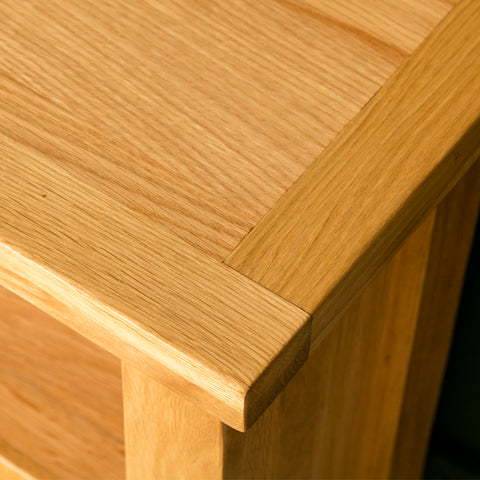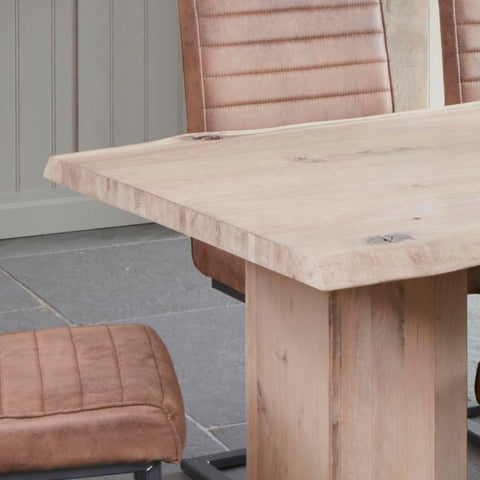Make Sure You Choose the Perfect Wood Finish for Your Furniture
The various finish options for solid wood and oak can seem a little daunting when you're choosing your new furniture. Lacquered, oiled, waxed, even painted - the various methods of finishing wood all have different properties and, as such, pros and cons. Let us talk you through some of them to help you choose the right furniture for your needs.

What is a Wood Finish?
A finish is a protective coating which is applied to wooden furniture after manufacture. It can serve two purposes: Firstly it provides a coating on the surface of the wood. This is important as wood is naturally porous and will absorb moisture and dirt. By applying a finishing layer to the wood, it gains some protection from this.
The finish can also be used to alter the appearance of the wood itself. This can be a subtle change, such as enhancing the natural colour or grain of the wood, or something more dramatic such as changing the colour of the wood completely.
Choosing the best finish for your furniture comes down to these two considerations:
- How hard wearing and durable do you need your furniture to be?
- What do you want the appearance of the finished surface of the furniture to look like?
Types of Wood Finish
Lacquered Furniture
Lacquer is a thin coating which is sprayed to the wood. As it dries is becomes hard and extremely durable as well as waterproof. Lacquered wood has additional protection from both acidic and alkali substances as well as water. The coating on the wood also provides protection from day to day bumps and knocks. Lacquered furniture is the perfect choice if you have children or pets or if your furniture gets a lot of use.

Lacquer comes in a variety of textures from high-gloss to matt. The majority of our lacquered oak and solid wood furniture has a satin finish - we find this provides a beautiful texture which complements the wood fantastically.
Lacquer requires very little maintenance and can be wiped clean.
Shop Lacquered FurnitureWaxed Furniture
Waxing is a traditional method for finishing wood. A coating of natural wax is applied to the untreated wood after the furniture is manufactured. The wax sits on top of the wood to provide a protective layer.

Most waxes don't have any colour and don't alter the appearance of the wood itself - waxed wood will have a natural, untreated look to it.
Because the wax sits on top of the wood and has a low melting point, it doesn't provide much in the way of protection against heat. However it will repel some liquids so provides some protection against spillage (although coasters are still recommended).
The wax on furniture will wear off over time and will need reapplying periodically (unlike lacquer).
Shop Waxed FurniturePainted Furniture
Not much explanation needed - a layer of paint is applied to the base wood, which is sealed and primed first. Painting is a great way to provide a hard-wearing surface for furniture. It also adds a burst of colour to the piece.
A large number of our painted ranges also feature lacquered oak tops meaning you get the best of both worlds.

Oiled Furniture
Oil is applied to the wood surface. Unlike wax, oil is in liquid form so it penetrates the surface of the wood. This has two effects - firstly it provides a higher level of protection against liquids than wax. Secondly, it darkens the tone of the wood adding depth, richness and warmth to its colour.
